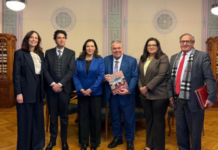The High Commission for Planning (HCP) released its annual report on regional accounts for 2022, highlighting the economic contributions and disparities across Morocco’s regions. The report provides a detailed overview of how wealth, economic growth, and consumption are distributed throughout the country.
Major contributions to national wealth
- Top three regions: The regions of Casablanca-Settat, Rabat-Salé-Kénitra, and Tanger-Tétouan-Al Hoceima collectively generated 57.9% of Morocco’s national wealth at current prices in 2022.
- Next five regions: Another five regions—Marrakech-Safi, Fès-Meknès, Souss-Massa, Béni Mellal-Khénifra, and L’Oriental—contributed 33.5% to the national GDP. Among these, Marrakech-Safi led with 8.3%, followed by Fès-Meknès (7.9%) and Souss-Massa (6.6%).
Economic disparities
- GDP variation: The average absolute gap between the GDP of different regions and the national average was 73.1 billion dirhams (MMDH), highlighting significant regional economic disparities.
- Growth rates: Four regions exceeded the national average growth rate of 1.5%:
- Souss-Massa: 7.5%
- Rabat-Salé-Kénitra: 5.2%
- Marrakech-Safi: 4.6%
- Laâyoune-Sakia El Hamra: 2.9%
Sectoral distribution
- Primary sector dominance: Seven regions, including Fès-Meknès, Rabat-Salé-Kénitra, and Casablanca-Settat, were responsible for more than 80% of the national value added in the primary sector.
- Secondary sector concentration: Industrial and related activities are heavily concentrated in Casablanca-Settat and Tanger-Tétouan-Al Hoceima, which together accounted for 58.6% of the national value added in the secondary sector.
- Tertiary sector wealth: The regions of Casablanca-Settat, Rabat-Salé-Kénitra, and Tanger-Tétouan-Al Hoceima generated 55.8% of the wealth from tertiary sector activities.
Per capita GDP and consumption
- Wealthiest regions per capita: Five regions reported per capita GDP above the national average of 36,284 dirhams. Dakhla-Oued Eddahab led with 80,996 DH, followed by Laâyoune-Sakia El Hamra with 71,246 DH, and Casablanca-Settat with 54,997 DH.
- Household consumption: Casablanca-Settat, Rabat-Salé-Kénitra, Tanger-Tétouan-Al Hoceima, and Fès-Meknès together accounted for nearly two-thirds (62.9%) of the country’s household final consumption expenditure.
- Regional spending disparities: The average absolute gap between regional household consumption and the national average was 44.2 MMDH. Six regions, including Dakhla-Oued Eddahab (31,316 DH) and Casablanca-Settat (27,128 DH), had household consumption levels above the national average of 22,253 DH in 2022.





